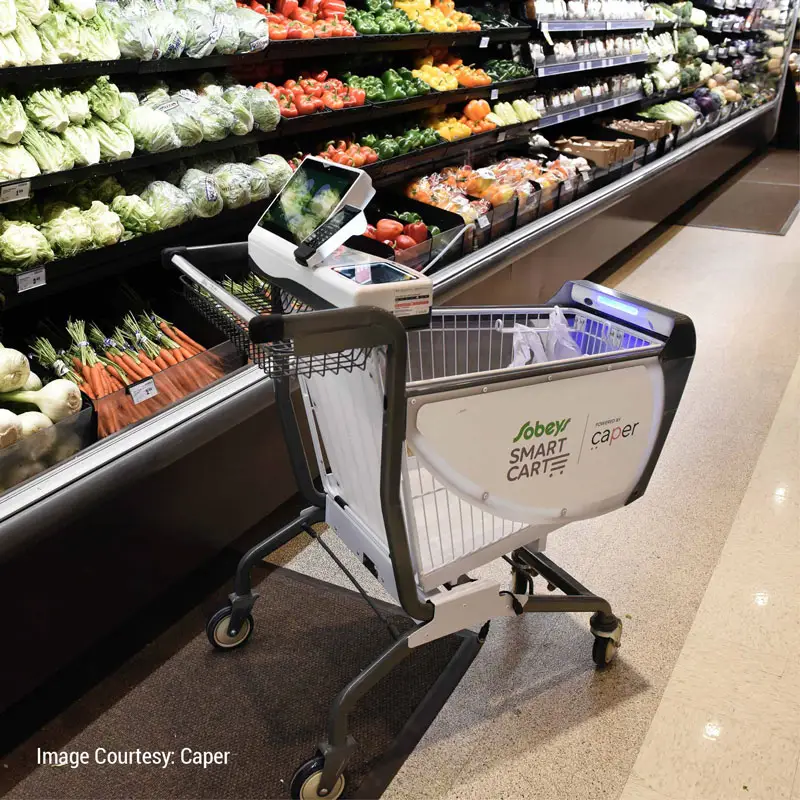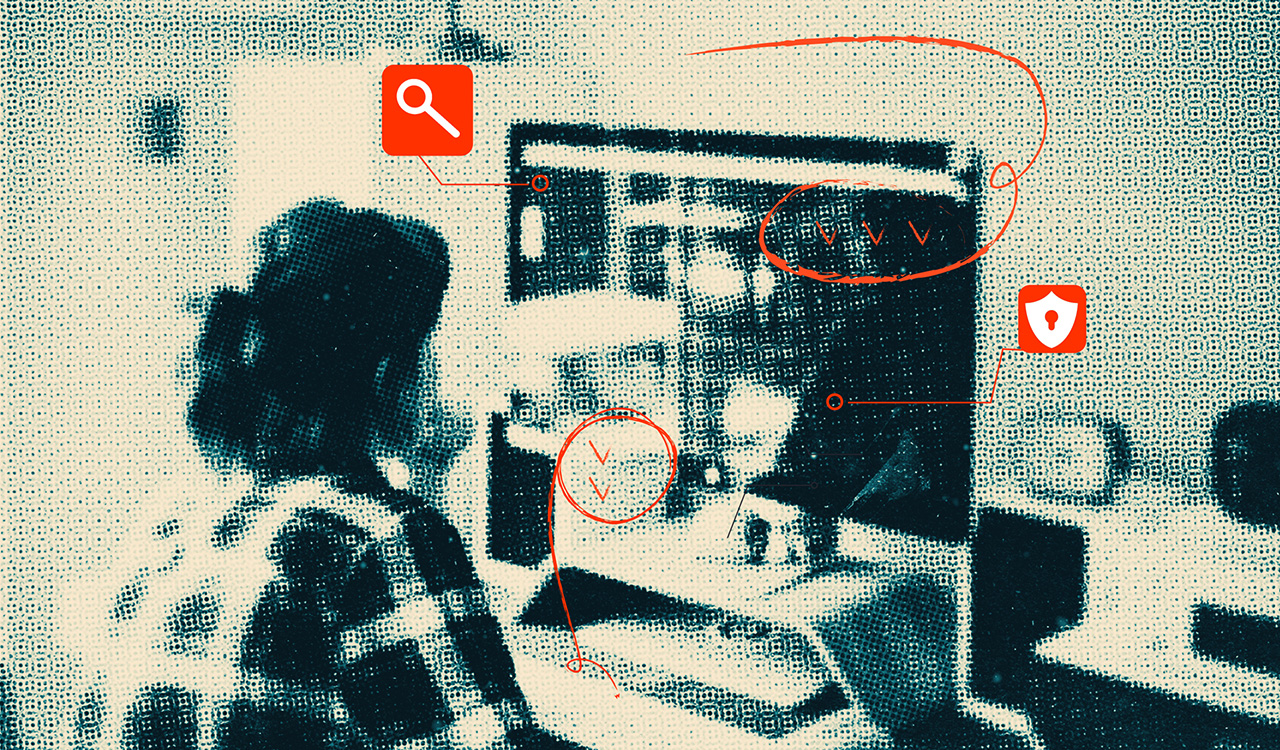Nobody likes waiting in line for a checkout lane to open. No one likes waiting in line, period. Self-checkout was supposed to solve for that, but self-checkout comes with its own set of frustrations, not the least of which is customers are doing unpaid work.
The big idea was that self-checkout would shift the work from store clerks to shoppers. The reality is that shoppers aren’t trained to operate the process or fix inevitable problems that arise when checking out. Over two-thirds of customers have experienced problems at the self-checkout lines and retailers find their often dysfunctional, widespread use contributes to shrinkage.
Grocery store shopping is something most of us must suffer through, if not weekly, at least occasionally. The average consumer shops for groceries about eight times per month, and it’s a toss-up of which is more painful: the rising cost of each bill (average $156) or the time spent in store (around 40 minutes each), according to Drive Research.
Tradtional Grocery at Risk
Shoppers have found workarounds for inflation, like trading down to lower-priced alternatives, buying more private label and switching to value-oriented retailers – all of which presents a challenge for established grocery retailers.
The traditional grocery channel’s share of market is falling – down from 70 percent in 2017 to 66.6 percent in 2022 – while nontraditional channels, such as warehouse clubs, mass merchandisers and discount/dollar stores are on the rise, according to Coresight. But no matter where people choose to shop, checkout is a hurdle that all must endure.
Nightmare in the Self-Checkout Line
Nobody likes waiting in line for a checkout lane to open. No one likes waiting in line, period. Self-checkout was supposed to solve for that, but self-checkout comes with its own set of frustrations, as described by sociology professor Christopher Andrews in his book, The Overworked Consumer: Self-Checkouts, Supermarkets and the Do-It-Yourself Economy.
The big idea was that self-checkout would shift the work from store clerks to shoppers. The reality is that shoppers aren’t trained to operate the process or fix inevitable problems that arise when checking out. Over two-thirds of customers have experienced problems at the self-checkout lines and retailers find their often dysfunctional, widespread use contributes to shrinkage, either intentional or otherwise.
Andrews describes the fallacy of the time customers save at self-checkout as an “illusory speed-up meant to distract them from the realization that they are performing unpaid work,” (in terms of compensation for checking out and bagging) and paying for full-cost goods. Shoppers benefit from no-frills retailers (like Aldi) that offer lower prices when service experiences are reduced. But in the case of traditional grocery stores, self-checkout customers pay the same price as those who use full-service checkout.
Self-checkout has proven its worth for purchasing a handful of items but fails for larger shopping baskets. Net/net: Self-checkout serves the interests of the retailer, not the customer. And that is the beginning of the end for customer service.
The next iteration of self-checkout is the introduction of scan-and-go mobile apps, where the customer uses the grocer’s app to scan product barcodes and pay for their goods. But it has its own set of problems, most especially shrinkage. One study found that hundreds of thousands of items went unscanned at 13 retailers, adding up to major losses. So far, batting near zero.
Wegmans Innovates
Wegmans gave a scan-and-go app a two-year trial, only to shut it down last fall, explaining, “Unfortunately, the losses we are experiencing from this program prevent us from continuing to make it available in its current state.”
Now Wegmans has a new card up its sleeve: Smart Carts provided by Israel-based tech startup Shopic. It’s a screen-based, device that clips onto shoppers’ carts that automatically scans every item put in or removed via computer vision recognition. The screen provides a running tally of the shopper’s basket and allows instant direct checkout. It also delivers retail media promotions linked to the customer’s loyalty profile, including sponsored content and suggestions for additional items that go well with products already in the cart.
The smart cart does all the work shoppers are forced to do themselves at self-checkout stations; sorry, bagging is still the customer’s responsibility. It also overcomes shrinkage associated with scan-and-go mobile apps. Shopic reports 99.4 percent accuracy for any item added or removed from the cart.
Further, the data collected tracks shopper movement patterns as they navigate the store, helping retailers optimize inventory, store layouts, displays and staffing. Traditional transaction level data collected at checkout only skims the surface of what shoppers are actually doing in the store.
Shopic operates under a hybrid business model; grocers purchase the smart cart hardware and pay a subscription fee for software licensing and hands-on service. The cost of implementing the Shopic system varies by the number of devices, stores and product SKUs, but it is designed for mid-sized and larger stores. Because it works with the store’s existing shopping carts, unlike competing vendors which require the purchase of separate tech-enhanced cars, the store only needs to find space for the device’s charging station and a counter for self-bagging.
Earlier this year, the smart cart system was adopted by 30 Shufersal supermarkets in Israel after field tests and the grocery chain plans to bring the total number of Shopic-enabled smart carts to 200 of its largest stores. Wegmans is currently testing smart carts in two stores in Amherst and Rochester, NY to measure their appeal to shoppers and value to the store.
Tech Fix for a Better Customer Experience
“The shopping experience in supermarkets is so far behind other retail,” Shopic CEO and co-founder Raz Golan shared. “The industry is struggling with rising costs, hiring and retaining employees and customer loyalty. If customers find good products at a better price, they’ll go elsewhere without a second thought.” Shopic’s smart cart solution is a fix for that. “Smart carts is so innovative and because it helps the shopper, it will attract them and help retailers retain them,” he continued.
The proof is in the pudding. Shufersal stores that piloted Shopic’s smart carts found that customers’ baskets were 78 percent larger than average. It increased the monthly spending of shoppers who used them by 8 percent, a significant bump in the fierce battle for grocery market share. And Shufersal reported 89 percent customer satisfaction.
“The number one complaint of shoppers is the checkout experience, and we let customers do what they’ve always wanted to do, come in, get their stuff, pay and leave the store,” Golan said. And another less obvious value is the smart-cart-enabled shopping experience gets shoppers in and out quickly no matter how busy the store is. We all know queues form even at self-checkout lanes.
Personalized Shopping
An emerging trend in retail tech is to recognize the shopper at the beginning of their shopping journey, not at its end. Solutions like Shopic have developed AI technologies to connect with shoppers and personalize coupons, product recommendations and immediate verification that the price they see on the shelf is what they have paid.
Tech for tech’s sake is not sustainable. Retail will advance with tech innovations that favor the customer. Collecting comprehensive shopping data serves the customer. For example, if a system detects out-of-stock or problems in the shelf planogram, it can alert management personnel in real-time to make the correction. “The operational side of smart cart implementation really drives efficiency, which goes right to the bottom line,” Golan explained. “It helps stores better manage layout optimization, traffic management, and shelf stocking from insertions and removals.”
New Horizons
Shopic isn’t the only game in town in the emerging global smart cart market that is expected to reach $5.7 billion by 2028. Veeve, founded by two former Amazon executives, is testing its smart cart solution with Albertsons and Instacart is under test with Kroger, thanks to its 2001 acquisition of smart-cart innovator Caper AI. Instacart has an established foothold with over 600 grocery retailers using its ecommerce platform, so it has connections. But it requires grocers to purchase the whole smart cart, not just a clip-on device.
While the battle between the various smart-cart players is still in its startup phase, the customers are going to be the big winners in the long run, no matter which provider grocery store retailers choose. I can’t wait till it comes to my local grocery store so I can speed through the aisles, get exactly what I came for with a little help from my smart-cart friend to keep me from missing something I might want, and then get on my way in a flash without having to endure the torture of the line at the checkout.





